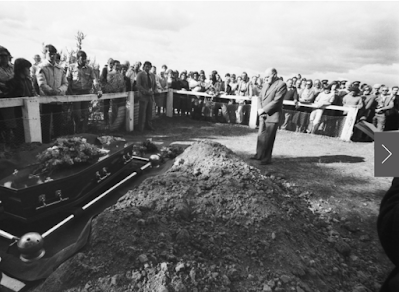Saturday, November 20, 2021
Friday, October 8, 2021
Australia's Natural Disasters
By Richard "Dick" Whitaker
Australia’s Natural Disasters tells many stories of the devastation that nature has wreaked on our wild country and its people. From the agonies of droughts and floods to the shocks of earthquakes and bush fires, Australia is a country famed as much for its ferocious natural hazards as for its rich environment. Freak weather has caused plane crashes and shipwrecks.Tuesday, July 20, 2021
The 1930 Melbourne Cup - Phar Lap and the Weather
Wednesday, June 23, 2021
The Siege of Glenrowan: Ned Kelly's Last Stand
On Monday 28th June 1880 one of the more famous events in Australian history took place - it was the siege of Glenrowan - also known as Ned Kelly's last stand. This event continues to be discussed in detail over many platforms, but surprisingly little information is available about the weather on that day. This is an attempt to reconstruct those long-ago meteorological conditions.
The Back Story
On the early morning of Monday 28th June 1880 a party of police confronted the Australian outlaw Ned Kelly and his gang, who were holed up in the Glenrowan Inn, located in northeastern Victoria.
Just before dawn police opened fire on the gang as they stepped out onto the veranda of the Inn and the two groups exchanged gunfire for an extended period. The events that followed are now part of Australian folklore, with Ned emerging from the half light of the dawn dressed in armour plate and attacking the police.
Ned Kelly, in full armour, attacks the police (Wikipedia Commons)
He was eventually captured and the other gang members (Dan Kelly, Steve Hart and Joe Byrne) were killed.
One feature of the siege is seldom discussed - that of the weather. However by using available resources from the Bureau of Meteorology data base, contemporary photography, lunar tables and existing newspaper reports we can construct a reasonable estimate of the weather conditions on the morning of 28th June 1880.
Available weather data
Rainfall:
Glenrowan lies between two much larger rural settlements - recognised as cities today - but much smaller back in 1880. Wangaratta is about 14 km to the northeast of Glenrowan, and Benalla 30 km to the southwest.
Weather observations did not commence at Benalla until 1882 - some two years after the siege. But fortunately records go back to 1868 at Wangaratta, with daily rainfall totals recorded all through until 1987 - a virtually unbroken period close to 120 years. This covered all of 1880, including of course, the day of the siege.
Temperature:
Temperatures are a more difficult issue. Rainfall data was taken from many rural locations during the 19th Century but temperature data is less common. The reasons for this are various but basically thermometers were harder to come by and more expensive to purchase than the simple rain gauge.
As far as the Glenrowan siege is concerned no temperature data was
available in the immediate area but some ideas can be obtained from
contemporary newspaper reports. The event was big news and reporters from
major newspapers were sent to Glenrowan in the early morning of June 28.
They rode on a special train that carried a police contingent tasked with
confronting and subduing the gang.
The reporters were Joseph Melvin of the Argus, George Allen of the Melbourne Daily Telegraph, John McWhirter of The Age and Francis Carrington of the Australasian Sketcher. They boarded the police train at Spencer Street Station late on Sunday night, 27th June 1880.
Newspaper Reports:
Francis Carrington later recalled that "the great speed we were going at caused the carriage to oscillate very violently. The night was intensely cold".
John McWhirter of the Age also described the scene: "The night was a splendid one, the moon shining with unusual brightness whilst the sharp frosty air caused the slightest noise in the forest beyond to be distinctly heard".
An article also appeared in the Freeman's Journal, Saturday 3rd July 1880- likely written by one of the reporters on the police train: "The night was clear and cold, the sky being almost unclouded. It was a pleasant night despite the sharpness of the temperature for the air was crisp and bracing and the sky was thickly studded with myriads of stars".
Upon reaching Benalla railway station the reporter again remarked on the night sky: "A fine large station but dimly lighted by gas. That mattered little though for by this time the moon was up, silvering with her radiance the earth and the heavens and casting a halo of glory upon the rugged and mountainous "Kelly country" - the peaks and spurs of which reared themselves ahead of us - standing out in bold relief against the cloudless sky".
These reports clearly indicate that the early morning of 28th June was clear and cold, with local frosts likely around the Glenrowan area. Lunar tables indicate that the moon was in the "waning gibbous" phase - the first phase after full moon.
Francis Carrington also produced this sketch showing the reporters huddled together in the train carriage - again hinting at the very cold temperatures of the early morning, 28th June 1880. (State Library of Victoria)
Tuesday, January 5, 2021
Hermit of the Murray River – “The Possum”
Monday, August 17, 2020
From Gods to Gigabytes - A Brief History of Weather Forecasting





















